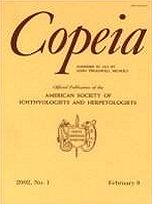Whole-animal performance traits, such as locomotor performance, are central to current concepts of phenotypic adaptation, yet the possible evolution of such traits via sexual selection is an underexplored hypothesis. We studied a cursorial, polygynous, territorial lizard to test two predictions of sexual selection theory applied to whole-animal performance: a secondary sexual performance characteristic may be sexually dimorphic, and variation in performance among males should be correlated to mating success. Maximal sprinting performance was measured in a series of wild-caught adult collared lizards (Crotaphytus collaris) from a single Oklahoma population. Sprint speed varied repeatably among individuals, but did not scale to body size among adults. Contrary to our first prediction, sprint speed did not differ between sexes. However, among 11 adult males sprint speed was strongly correlated to territory size and a spatial index of potential mating success (independent of body size), which indicates phenotypic intrasexual selection, whether direct or indirect, for whole-animal locomotor performance. The lack of sexual dimorphism in sprint speed may reflect trade-offs with other sexually selected traits (e.g., head size) and/or condition-dependence of running capability. Sexual selection of social behavior may underlie more generally the evolution of physiological performance, and therefore of suborganismal physiology and morphology.
How to translate text using browser tools
1 May 2006
Locomotor Performance and Sexual Selection: Individual Variation in Sprint Speed of Collared Lizards (Crotaphytus Collaris)
Charles C. Peterson,
Jerry F. Husak
ACCESS THE FULL ARTICLE





